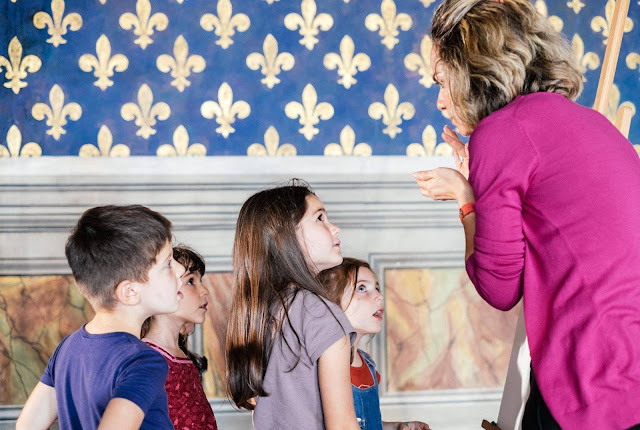While everyone knows how important tourism is for Italy, the steadily growing number of visitors in some of Italy’s most beautiful locations is actually causing serious problems (and plenty of protests from residents). As crowds increase (and people’s behavior worsens), locals are losing patience with mass tourism, which many feel is ruining their cities. Although Italians are quite aware that tourism is the country’s leading service industry, and for many people it pays the bills, they are also concerned that if the trend of exponential growth continues, it will become unsustainable.
Places like the Cinque Terre, which have become one of the iconic seaside locations on travelers’ bucket lists, receive up to 2.5 million visitors each year. That is an overwhelming number for a place with only 5,000 residents and a geographically restricted surface area - these 5 small towns occupy 43 square kilometres (17 square miles) which are perched on terraced mountain slopes that plunge into the Mediterranean Sea. The result is that the crowds create a human traffic jam, clogging the villages, trains, ferries and even the natural hiking paths.
Venice is no better off, with about 20 million visitors a year and 270,000 residents. Florence definitely feels the crunch as well, with its 350,000 inhabitants hosting approximately 16 million tourists annually. Recent episodes of vandalism and indecent behavior by tourists has added to the discontent. As the crowds increase, it seems that the sophistication of tourists declines. From swimming in the Grand Canal, to urinating in the courtyard of Palazzo Vecchio, manifestations of sheer ignorance and disrespect have become all too commonplace, and cases of disorderly conduct, drunkenness and defacing public property (including historical monuments) are on the rise.
 |
| Florence's Piazza dei Giudici becomes a beach... (photo: La Nazione) |
How local authorities should handle the situation is not so clear. Some officials have talked about increasing tourist taxes and entrance fees (as well as charging them where up to now it has been free), limiting numbers for access to monuments, etc. While these measures might have some influence, they don’t promise to solve the problem of numbers, especially in those places where tour buses, and even worse, cruise ships, deposit their hordes of “day-tripping” visitors. As Vittorio Alessandro, president of the Cinque Terre National Park, so aptly put it: dealing with cruise ship crowds is like "organising a party at your house with no idea of how many people are going to turn up… Sustainable tourism is something that benefits the area, the host and the visitor. But a tourism that is so quick and frantic leaves nothing to the territory."
This is also a huge problem in Venice, where there is the additional danger of the damage these huge ships can (and do) cause to the delicate canal structure. Exasperated locals are voicing their discontent more and more, increasing the risk of episodes of intolerance by more extremist groups.
Unfortunately, efforts to curb the number of cruise ships admitted to the popular destinations continue to fail because local governments seem unable to resist the financial draw of these lucrative vessels. As they greedily fill their coffers, they continue to blindly ignore the critical situation that is building on the shore.
The more astute members of the tourism industry know that it’s better to focus on the quality of the visitors, rather than the quantity. This is not to be interpreted as an elitist attitude, since all socio-economic categories can represent high-quality tourism. The point is to focus on promoting culture, and drawing more respectful visitors. People who visit one of Italy’s monuments with the sole purpose of taking a selfie or, even worse, leaving their signature on one of the artworks to prove they were there, are not the kind of tourists any country needs.
 |
| The devastation made to Bernini's Fountain in Rome by Dutch hooligans. |
While it might seem to be a contradiction, large numbers of visitors don’t always mean big profits for local merchants. In fact, one of the negative aspects of mass tourism is that it actually harms businesses. Here in Italy they have coined a term for it: “turismo mordi e fuggi” (literally, bite and run tourism) - while in English it is popularly known as “carbon footprint” tourism. In general, tourists are staying fewer days and spending less and less during their visits - both in terms of shopping and services. Cruise ship visitors are even more likely to “take without giving” - as they don’t seek meals or accommodations, and most of the services they use do not benefit local providers.
Traveling on a shoestring is on the rise, so merchants have had to invent strategies to combat the new low cost phenomenon. There is an inflation of panini venues, selling cheap, quick alternatives to a sit down lunch, and shops or stands filled with trivial gadgets (NOT Made in Italy and often counterfeit) which have cropped up like mushrooms.
Everyday there are fewer places where you can find good quality, reasonably priced authentic Italian products. Only the high-end designer goods (for which Italy in particular is famous) are holding out - but they have become totally out of reach for the middle-class customer.
The result is a decline in quality travel for everyone; the tourist and the host. This is why it is important to address and promote the idea of sustainable tourism, where the focus of travel is to come away with something more meaningful than a digital photo and another stamp on your passport.



























